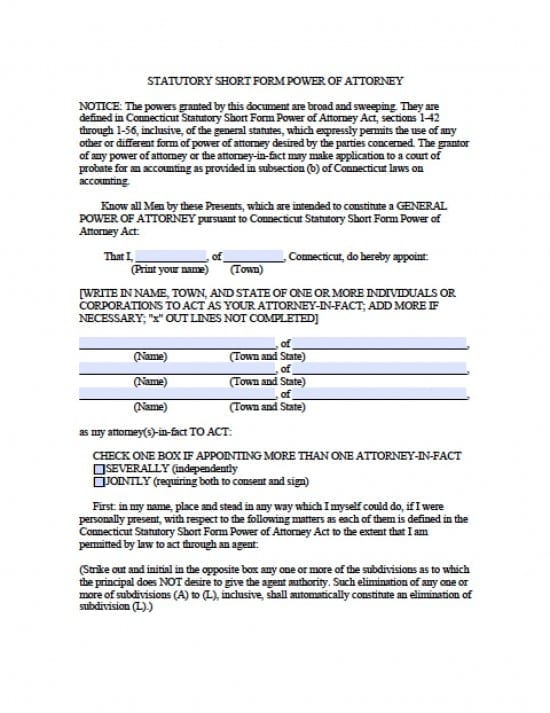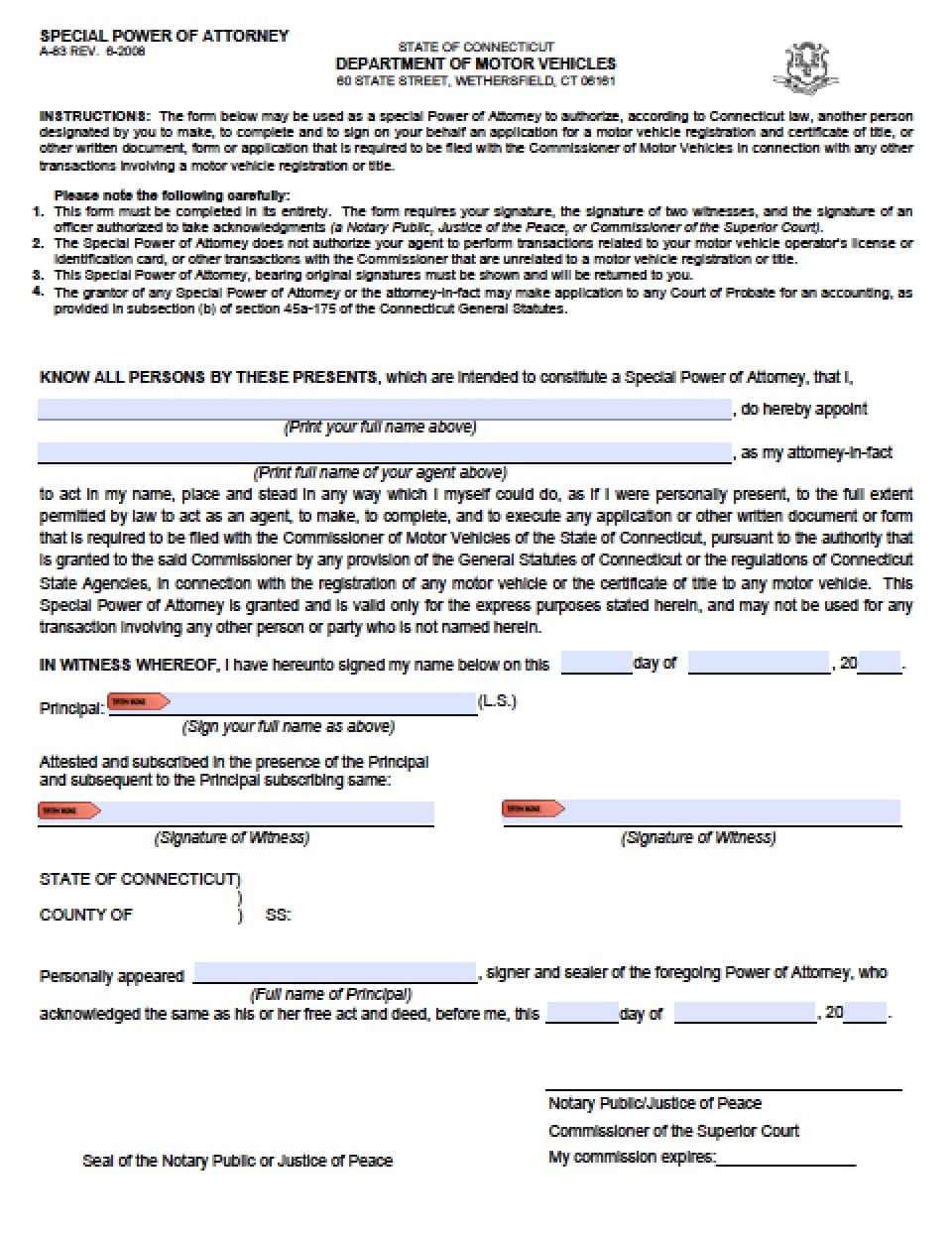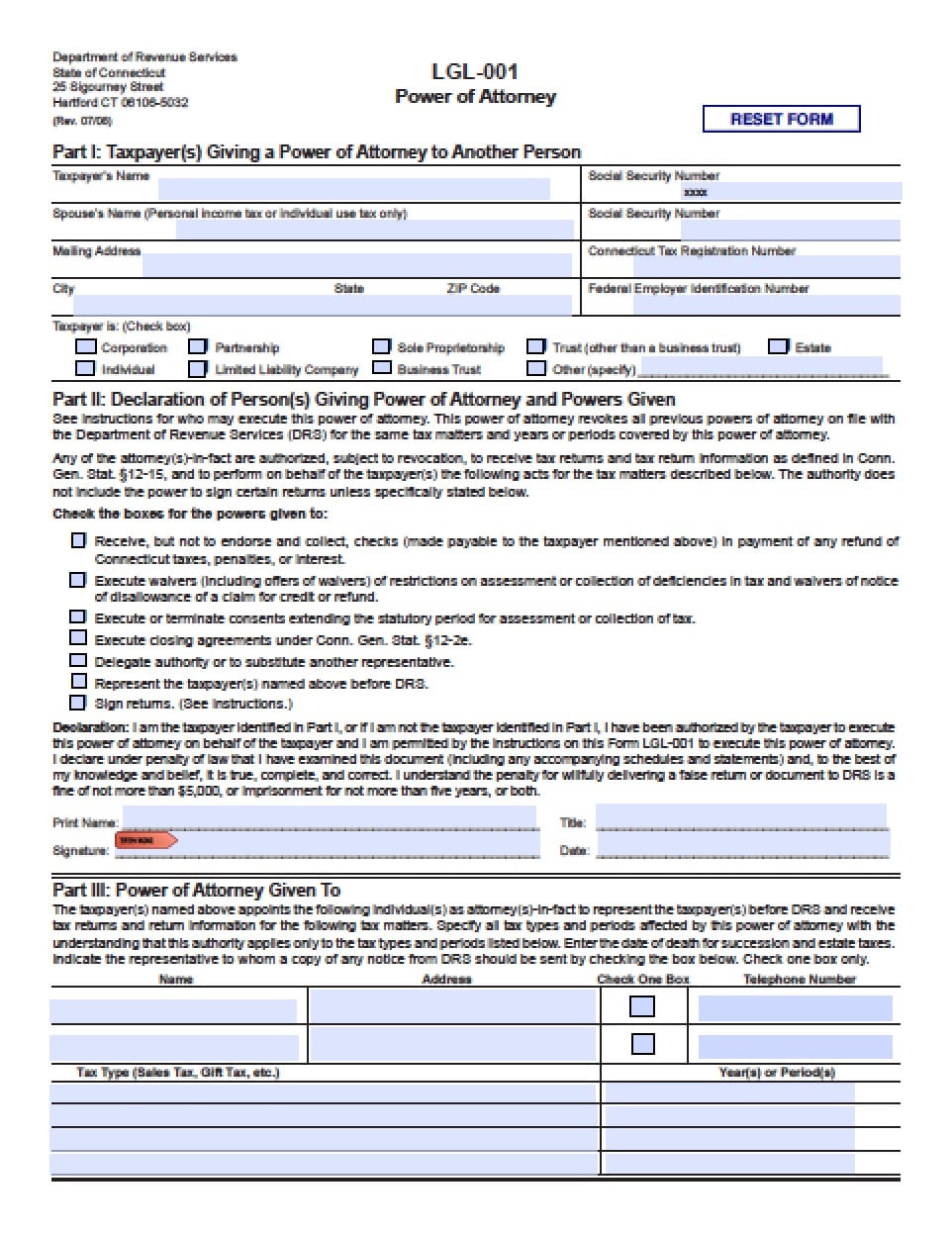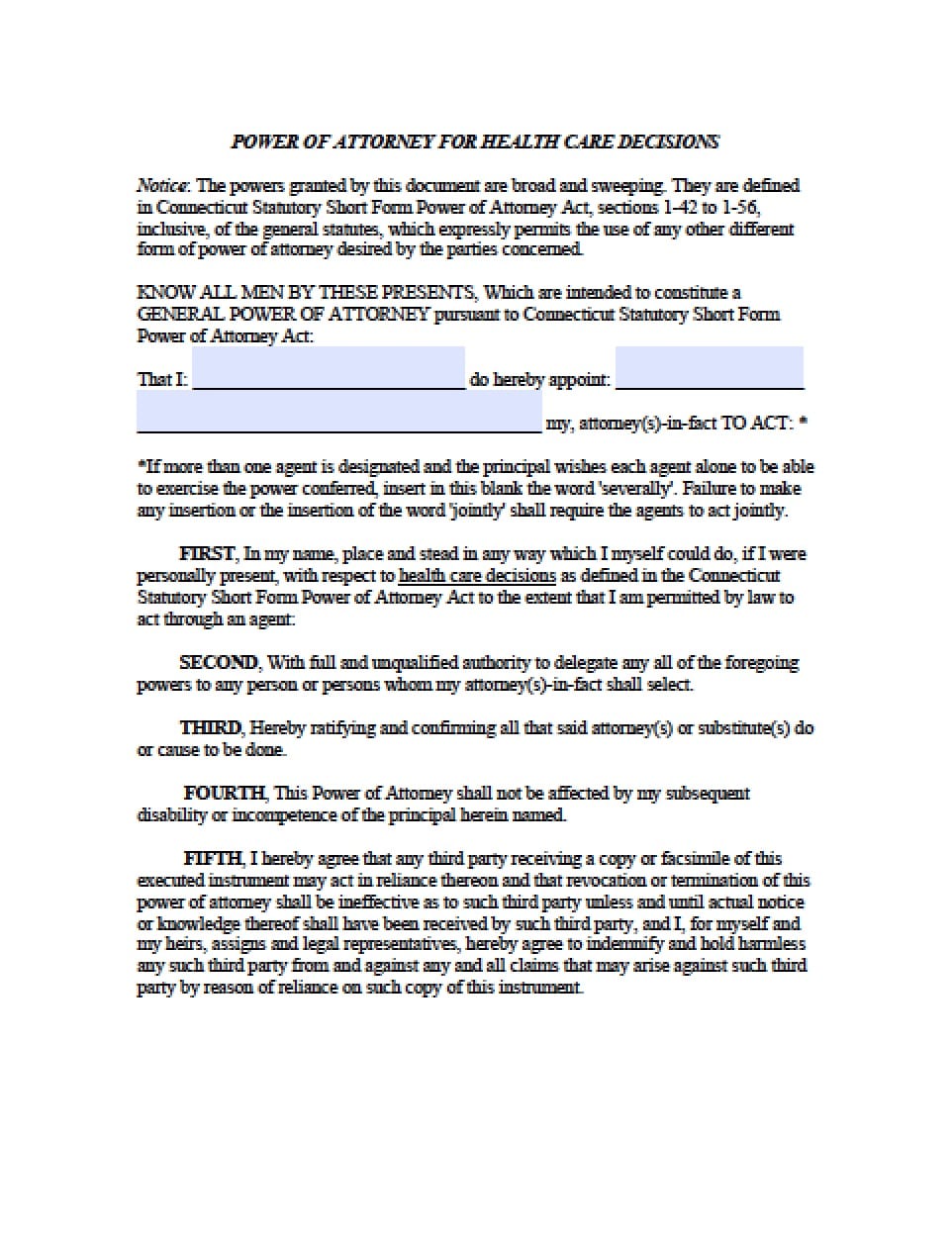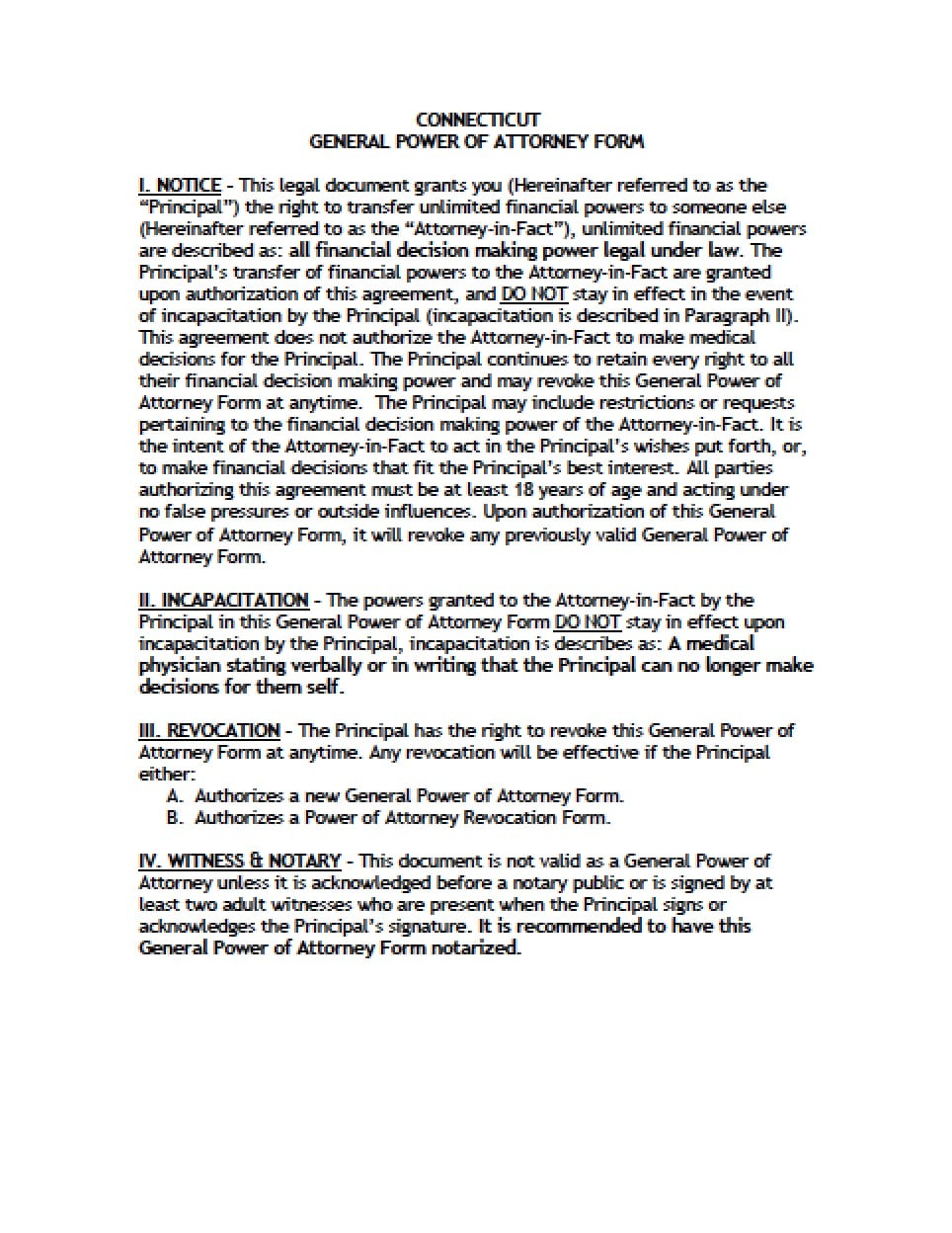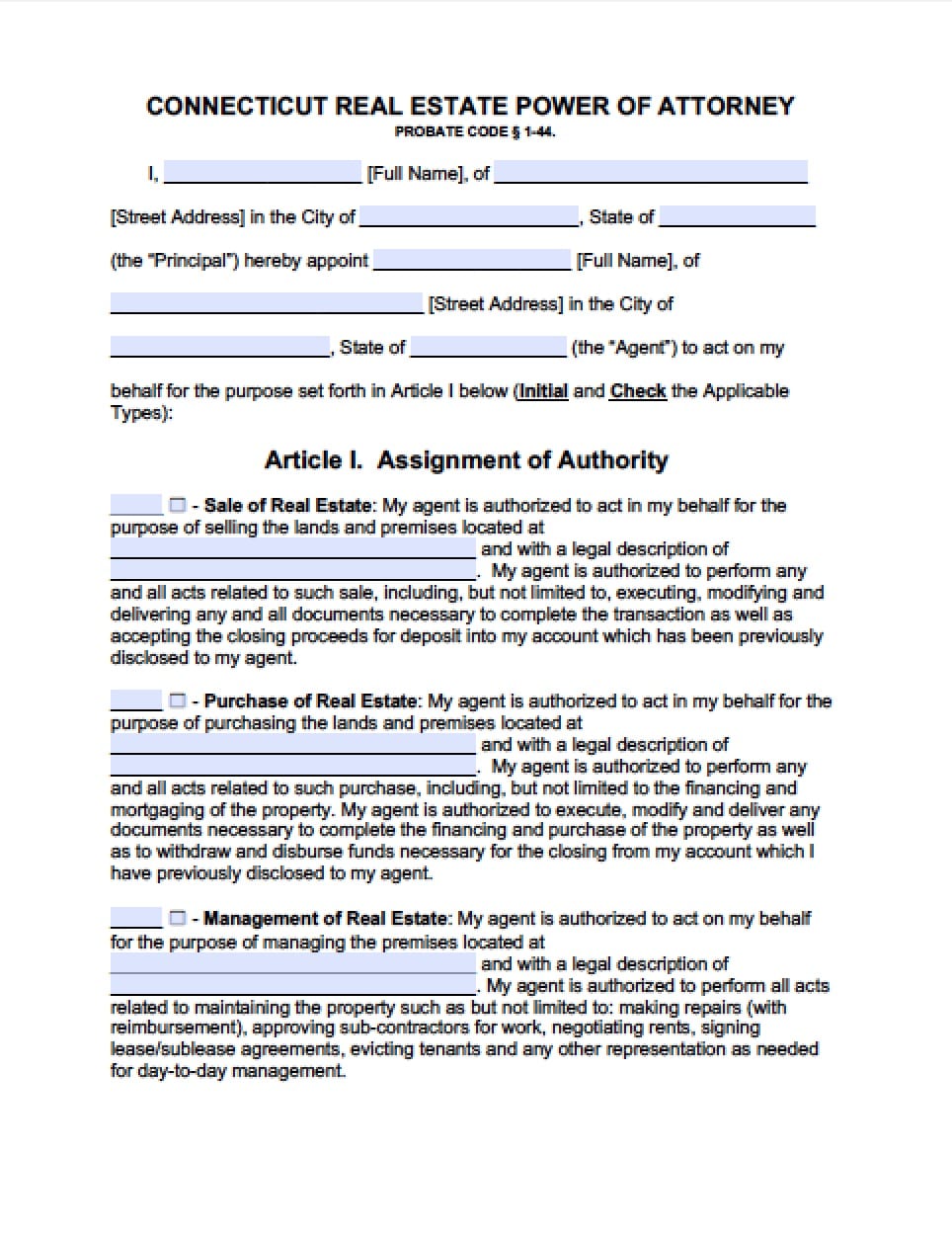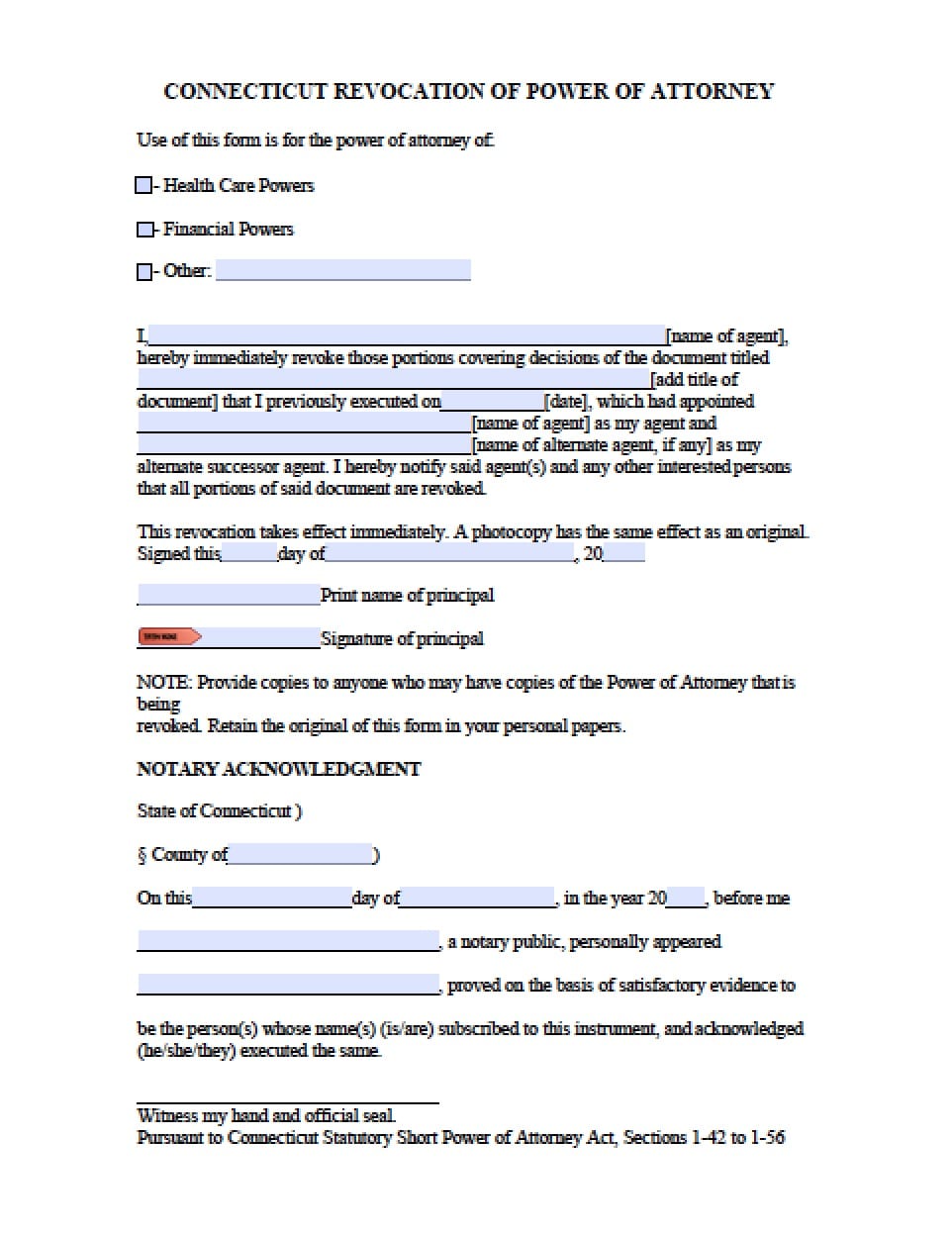 | Connecticut Durable Financial Power of Attorney Form |
The Connecticut durable financial power of attorney form is a for that is a legal document the Principal would use, to allow another person to act for with regard to your finances. The Principal will create a legal relationship with an “attorney-in-fact” or agent. A power of attorney specifies the powers the Principal would give to an attorney-in-fact. The powers allowed may be limited or broad. For example, if the Principal is selling real estate, but is unable to attend the closing, they may give someone they trust, the power to do nothing more than sign the deed, in absentia of the principal . Most “durable” powers of attorney, give provide the attorney-in-fact the power to do almost anything you could do. ( See sections 1-42 through 1-56 of the general statutes for the state of CT )
How To Write
Step 1 – Begin by downloading the form and reading the information at the top of the page.
Step 2 – Declaration of the Principal and Attorney(s) in Fact/Agent(s) as follows:
- Print the Principal’s name
- Print the name of the town in which the Principal resides
- Print the name of one or more attorney(s) in fact
- Print the name of the town and state in which they reside (if there are less than three place an “X” in any of the blank lines to be certain no other names are entered without your knowledge
- If you will have more than one Attorney in Fact check one of the following boxes on the form:
- SEVERALLY (independently)
- OR
- JOINTLY (requiring both to consent and sign)
Step 3 – Powers appointed to Attorney’s in Fact – In the list below if you wish to allow your agents all powers over all of your financial matters, do nothing. If you wish to limit the powers, strike through and initial any powers you would like to limit from the following list located on the form:
- (A) real estate transactions
- (B) chattel and goods transactions
- (C) bond, share and commodity transactions
- (D) banking transactions
- (E) business operating transactions
- (F) insurance transactions
- (G) estate transactions
- (H) claims and litigation
- (I) personal relationships and affairs
- (J) benefits from military service
- (K) records, reports and statements
- (L) all other matters
Step 4 – Additional Powers – If you would like to note additional powers you would like to grant to your Attorney(s) in Fact/Agent(s) you may enter those powers in the blank lines provided. If extra room in required, add a sheet with any additional information and add it to this form.
Step 5 – Notarization – In order to complete this form you will require the services of a notary public and two unrelated witnesses, for it to be considered a legal document. Once you are before a notary:
- Your two witnesses must provide the following:
- Printed full name
- Provide their signature under their printed name
- The notary will complete the required notary information and affix their state seal on the document
- The notary will hand the document back to the Principal
- Make copies to provide to all who have signed the document. The Principal may also wish to provide copies to any entity in which the Principal has interest, so that they may be aware that a power of attorney is now in place and they will know who to contact if needed.
